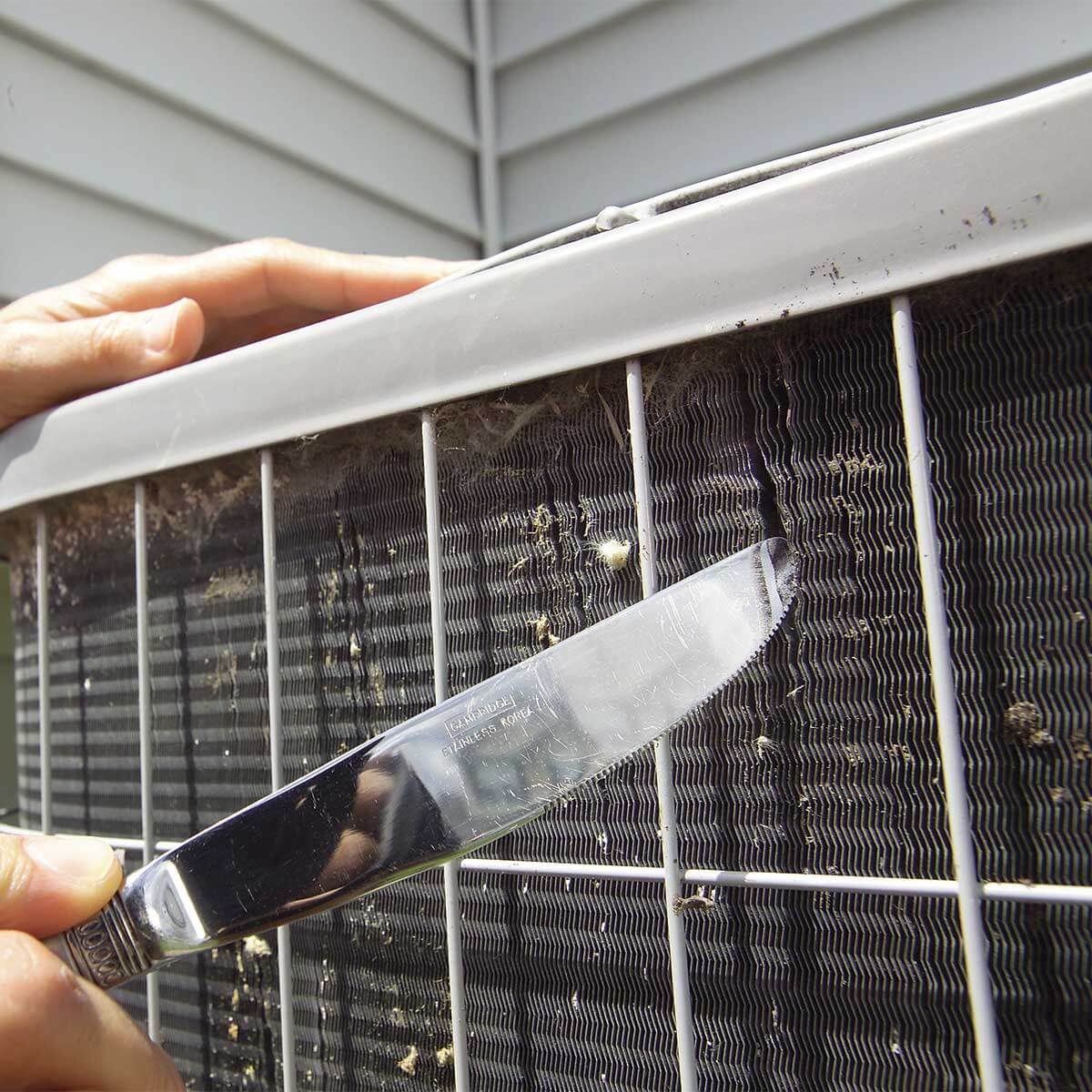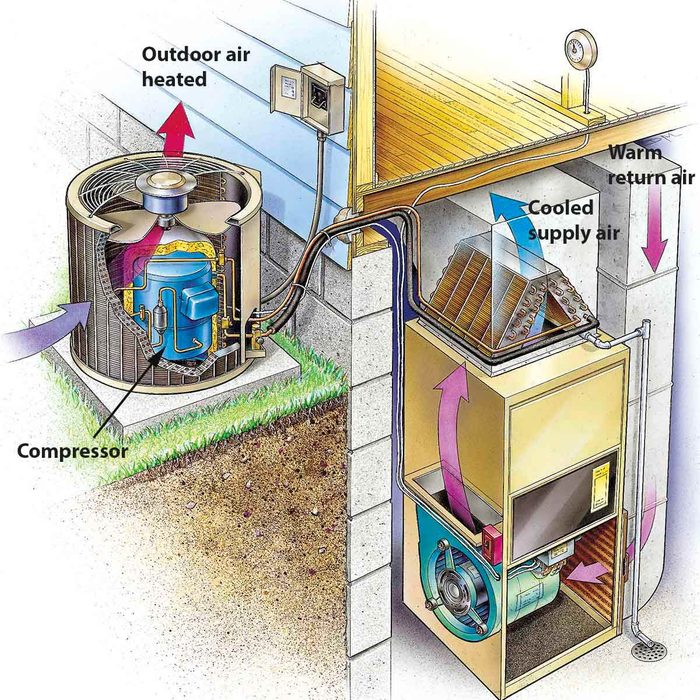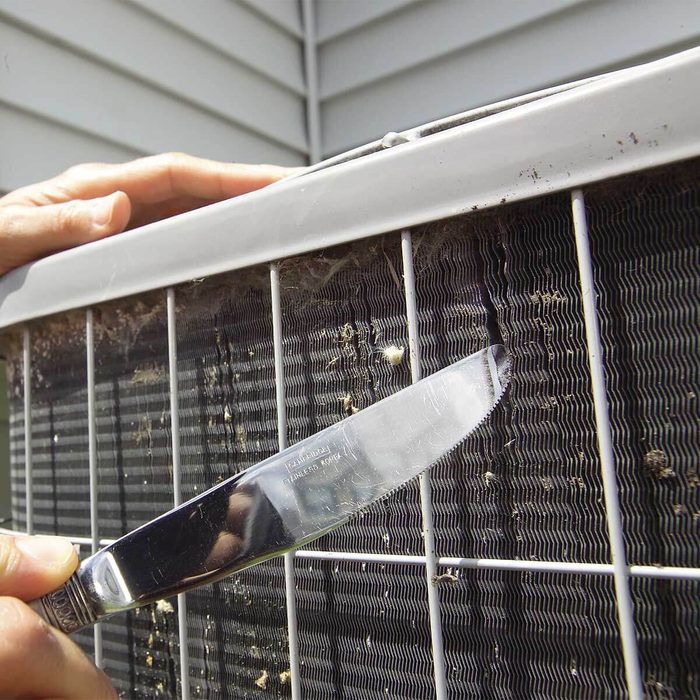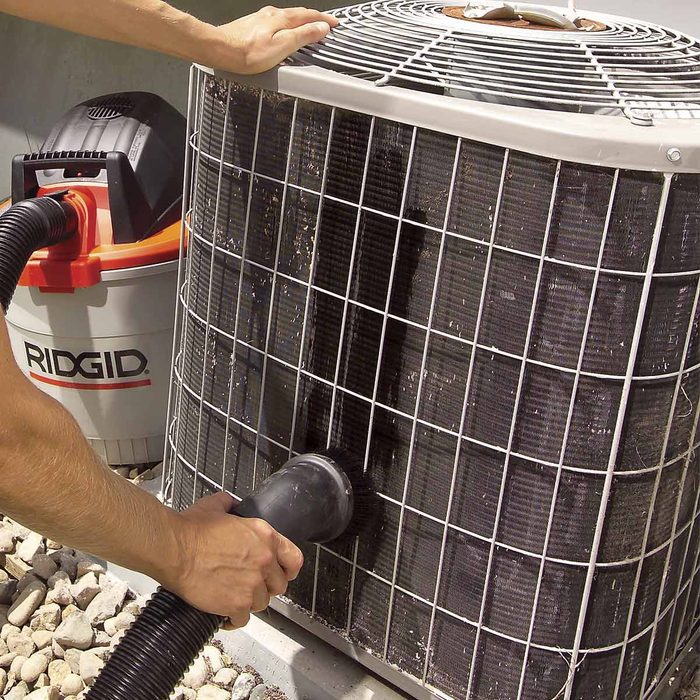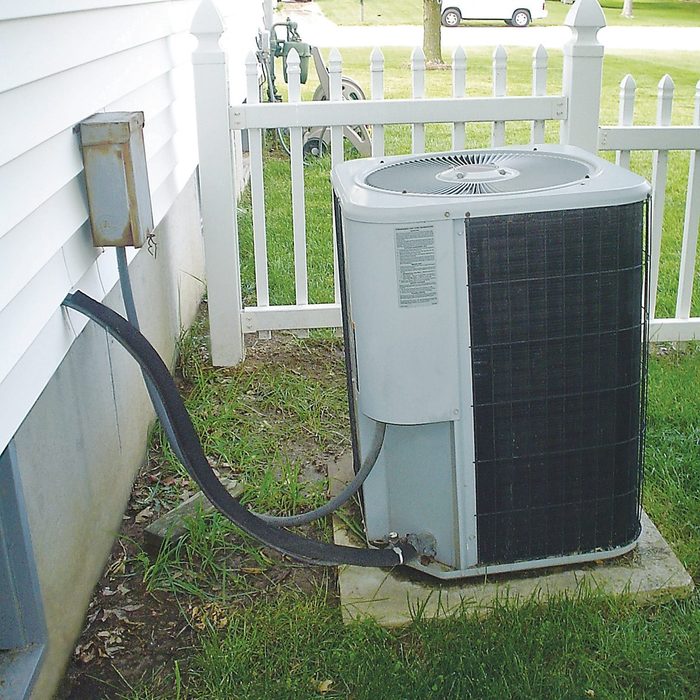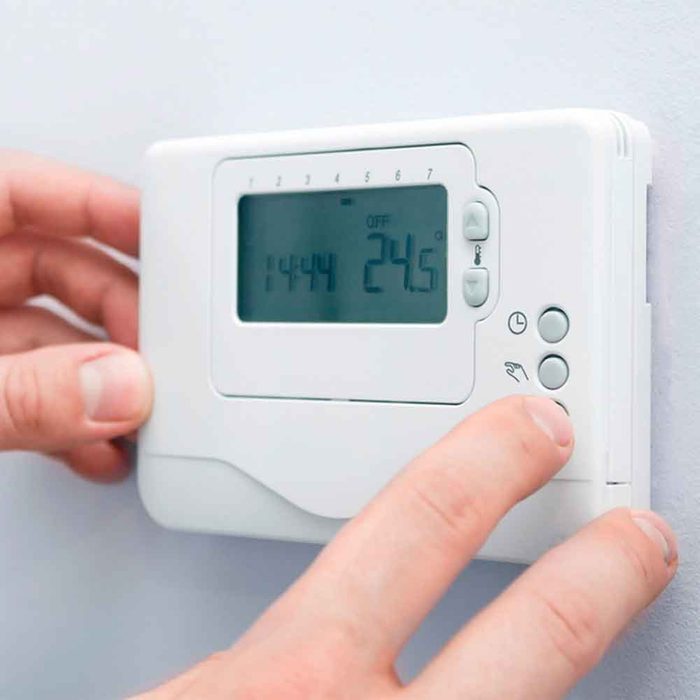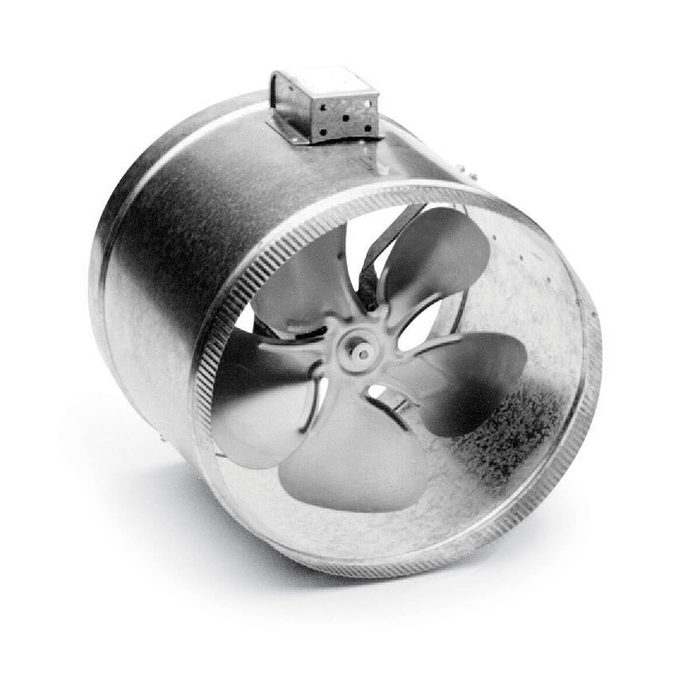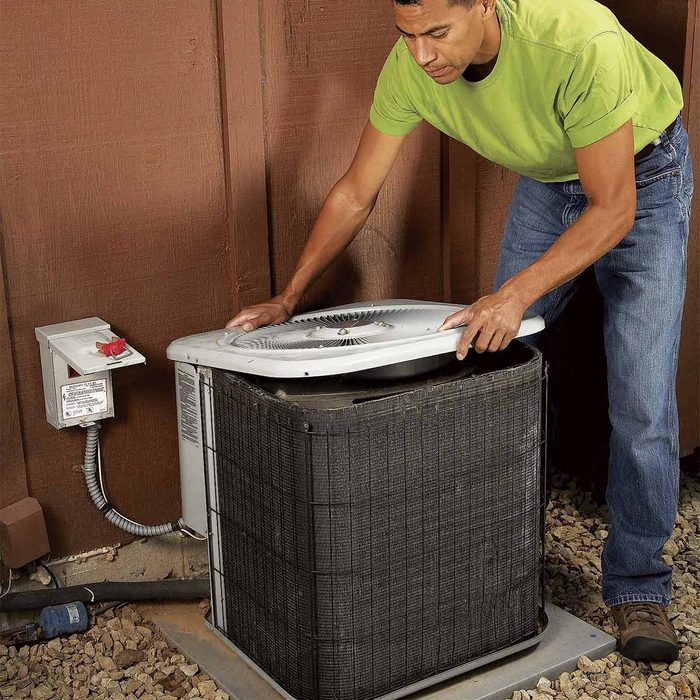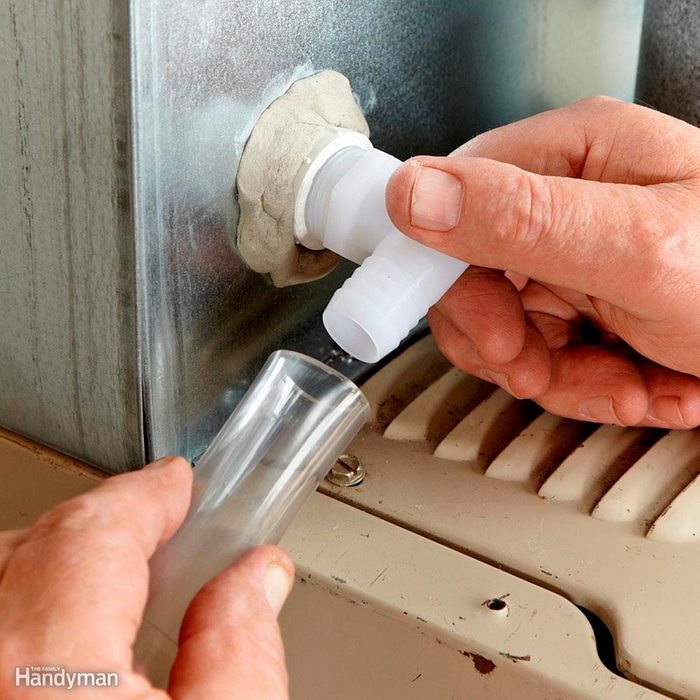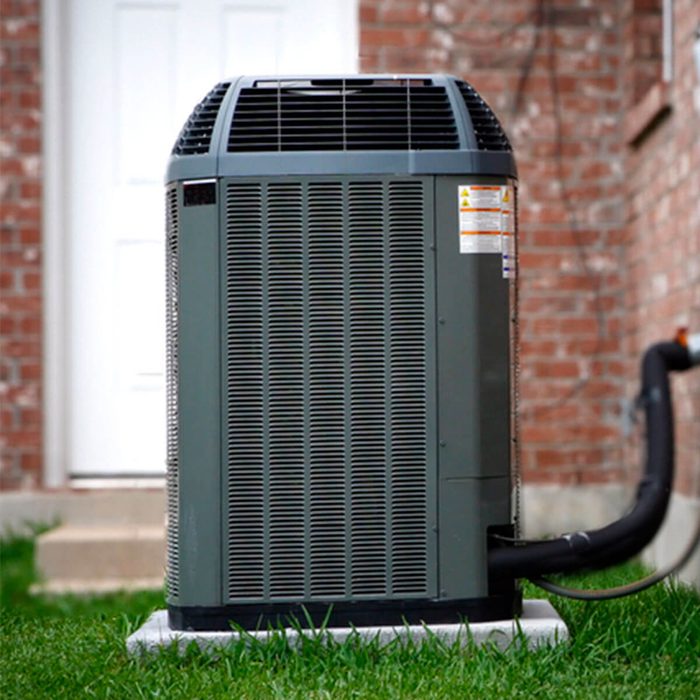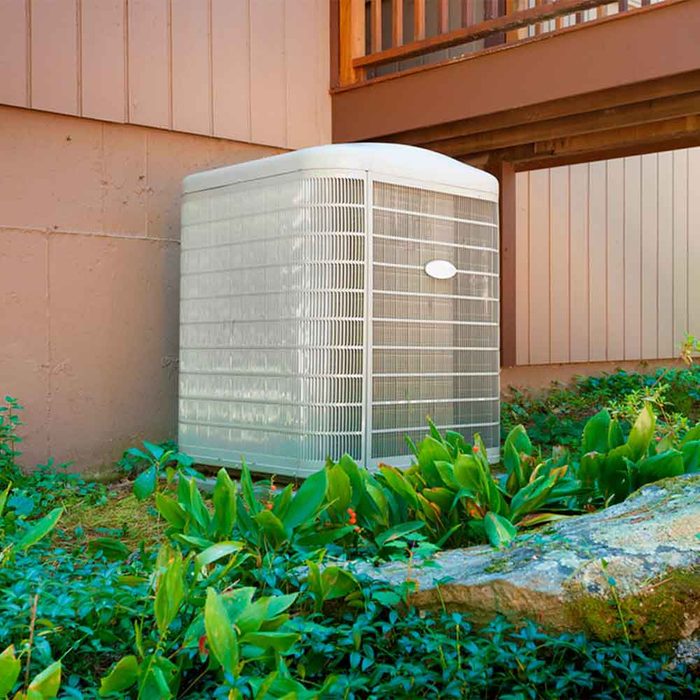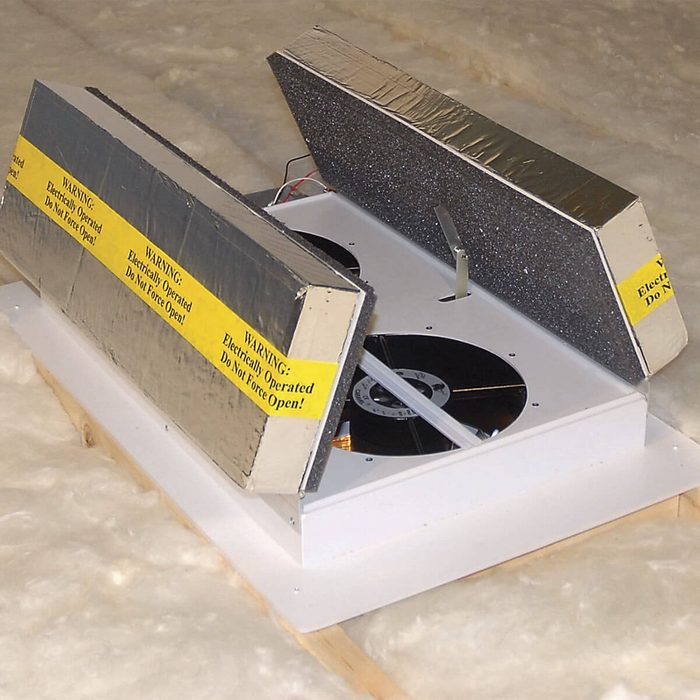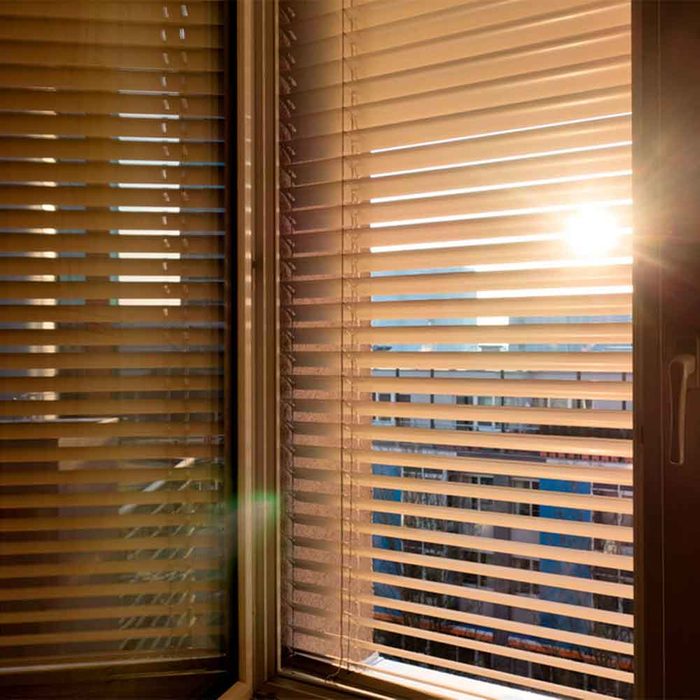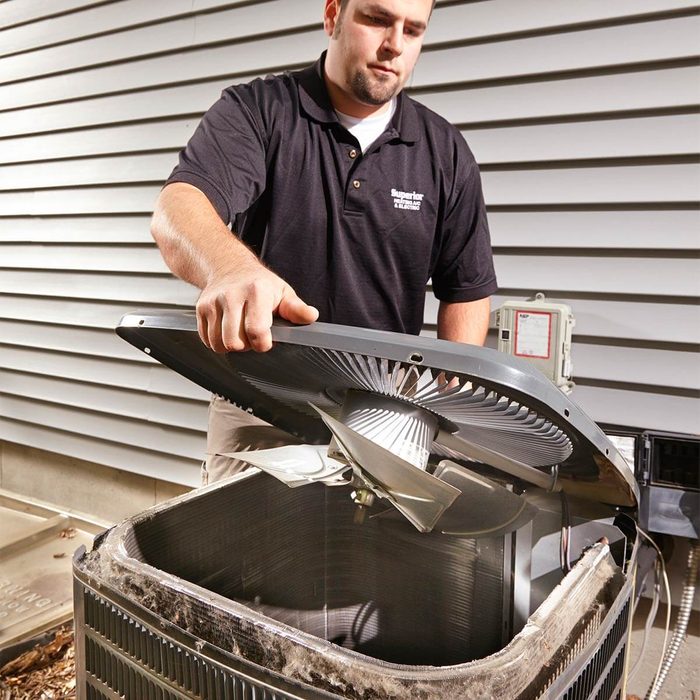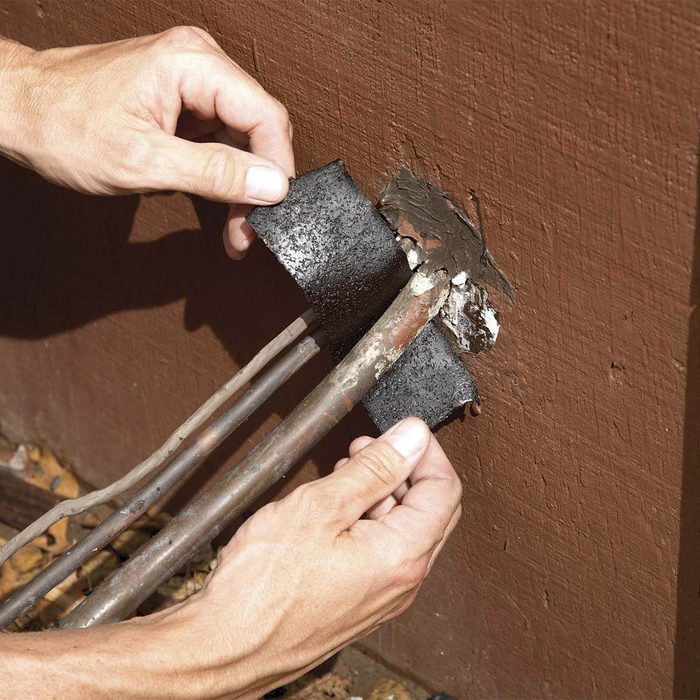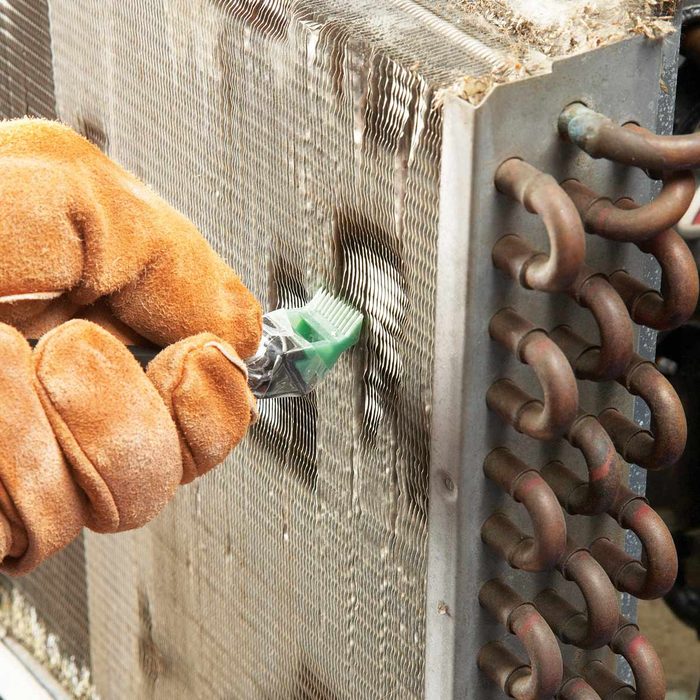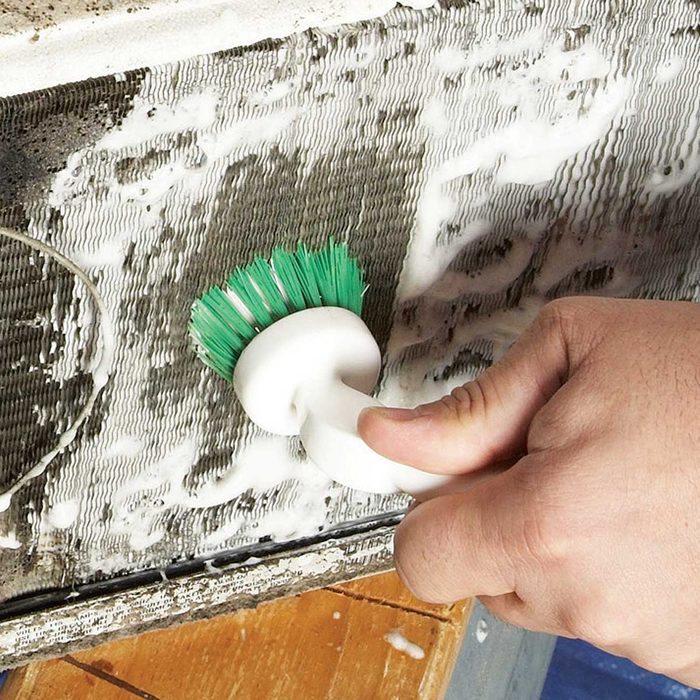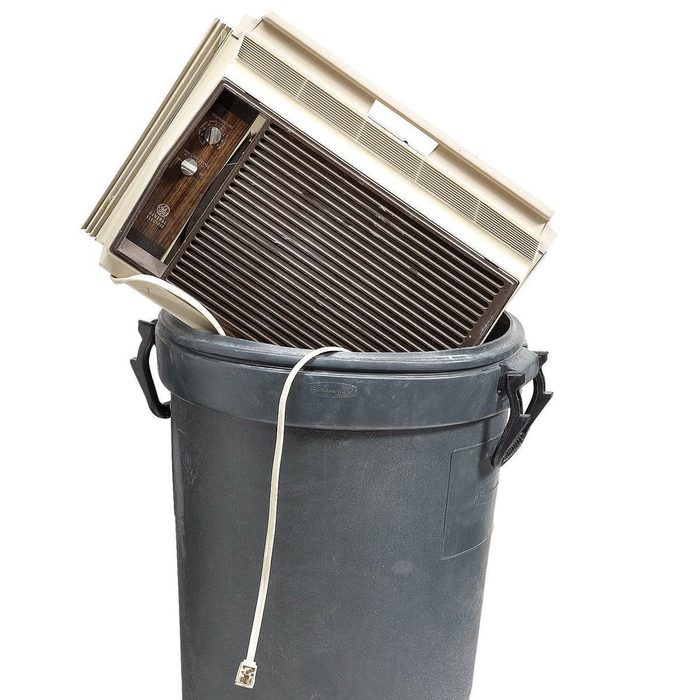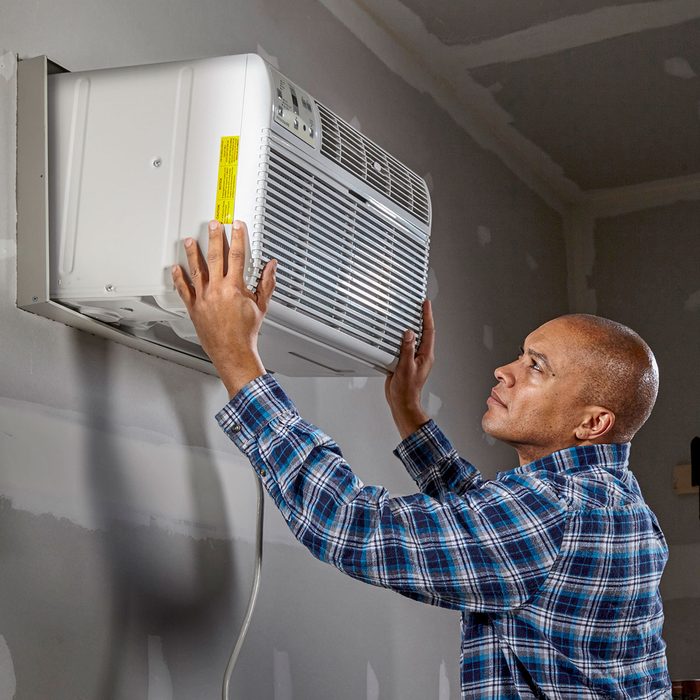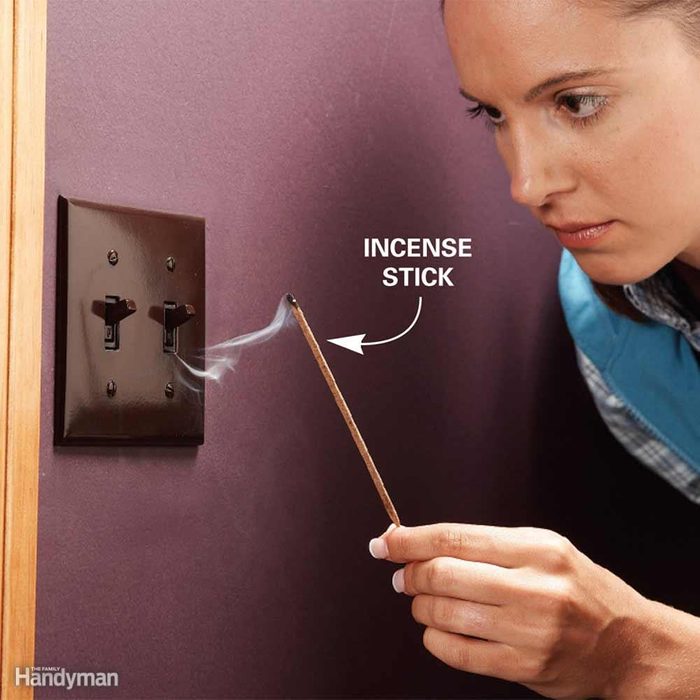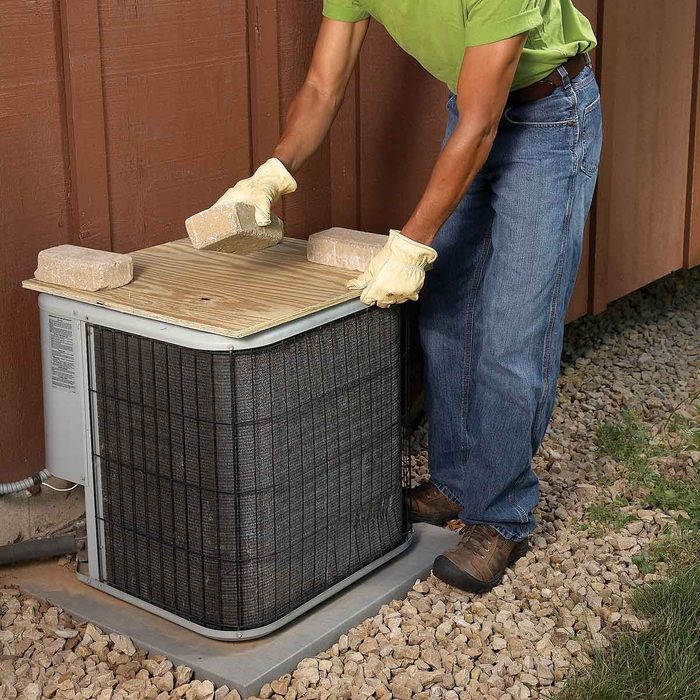Most central air conditioners have two basic parts: an outdoor unit (compressor/condenser) that sits next to your home and an indoor unit (evaporator) that’s located in a central duct near your furnace. If you have a heat pump instead of a furnace, the indoor unit will be in the air handler. Use the same maintenance steps we show here. If your furnace looks different from the one shown or you have a heat pump, use the owner’s manual to find your way around it. The basic parts will be the same.
Realign bent or crushed fins with a fin comb, which is an inexpensive tool (less than $10) available online. You can also do the job with gentle pressure from a dinner knife. Don’t insert the knife more than 1/2 in.
Cleaning an air conditioner in the spring, before you start running it, will help it perform better through the dog days of summer. To start, vacuum the fins of your AC unit clean with a soft-bristle brush. Note: they’re fragile and can easily be bent or crushed. If you bend one, straighten it with a fin comb.
On many units you’ll have to unscrew and lift off a metal box to get at the fins. Check your owner’s manual for directions and lift off the box carefully to avoid bumping the fins. Do you know if it is good to leave your air conditioner on all day?
The concrete pads under home air conditioner and heat exchanger units tend to settle over the years. As long as there’s no strain on the copper coolant tubes and electrical lines, and the unit stays dry and level, it’s OK that the pad has sunk. But if it continues to sink and pulls the lines tight, or if water puddles around the unit, you’ll need to fix the sinking pad.
Daniel Krason/Shutterstock
A programmable thermostat is a must-have air conditioner maintenance tool for today’s AC technology. Programmable thermostats allow you to set temperatures for various times throughout the day and automatically lower the temperature when you most need it to help you save money and manage your cooling without constantly hovering over the dial.
If you have forced-air cooling but there’s still a room that’s hotter than all the rest, a duct or vent booster fan can increase the flow of cool air into that room. Two types of booster fans are available. An in-line duct booster fan (shown) fits inside the duct of the room you’re trying to cool. You mount the fan near the outlet and it automatically kicks on when your cooling system runs.
Vent and register booster fans sit directly on top of or replace ceiling, floor or wall registers. Depending on the model, you can set it to operate automatically, control it with a switch or operate it by a remote control.
If you already have a newer condenser, the worst noise is probably coming from the compressor. (Fans on newer units are very quiet.) One of the most common fixes for a noisy air conditioner is a sound blanket. Contact the manufacturer to find a sound blanket for your model or buy a universal blanket. Installation is easy. Don’t bother putting a blanket on an old unit—you’ll still hear the noisy fan.
When you see water puddling around the furnace with the AC running, you have a clogged condensate drain tube. Condensation from air conditioning coils contains bacteria that can form slime and clog the condensate pan drain tube. A vital air conditioning maintenance task for this situation is to empty the drain pan and unclog the drain tube.
GSPhotography/Shutterstock
Make sure your AC is in good working order to keep you cool. When it gets hot outside, you want it to be nice and cool inside your home. Use this handy inspection checklist to assess your HVAC system and then schedule an appointment for any needed air conditioner maintenance or repairs before summer heats up.
Turn off the power to the furnace at a nearby switch or at the main panel. Then pull out the furnace filter and check it for dirt buildup. Change it if necessary. If it still doesn’t work, then look for these signs that your air conditioner needs to be repaired or replaced.
Christian Delbert/Shutterstock
AC units are carefully sized to the amount of cubic feet they need to cool. That’s particularly important when you are purchasing a new AC unit or renovating your house. If an AC unit is rated for a smaller space than you have, it will work too hard to cool the air, wear out more quickly and struggle to meet the demands of the thermostat.
Whole-house fans have helped cool homes for a century. The basic design is simple: An attic-mounted fan pushes hot air out through attic vents and draws cooler, outside air in through open doors and windows. This rapid air exchange—large fans can purge a house of hot air in two to three minutes—not only removes built-up heat but also creates a pleasant breeze.
A lot of heat enters the home through windows, especially open windows. If you really want to control heat in your house, pay attention to your windows, too. Keep them closed and covered with blinds or drapes during the hottest parts of the day—especially windows that are currently facing the sun.
When central air conditioning fails during a heat spell, you may have to wait days for an HVAC repair technician to show up, and you’ll probably pay at least several hundred for the repair. But if you’re comfortable working around electricity and are willing to spend about $50 on parts, you can probably repair your air conditioner yourself in about two hours and save a lot of money on parts markup and labor.
Condensation that forms on your outdoor AC lines reduces efficiency and raises your energy costs. But you can improve your unit’s efficiency by replacing insulation that’s damaged or rotted around your outdoor AC lines.
Also, find out if you should cover the air conditioner for winter.
Remember that fin comb we mentioned? It works perfectly for separating bent fins on a small room air conditioner. Be sure to wear gloves to protect your hands from getting cut!
Sometimes, no amount of air conditioner maintenance will save an old or damaged unit. If that happens, don’t just assume you can toss your old AC unit in the trash. There are likely rules about proper disposal in your city. Contact your local waste management organization to dispose of your AC unit properly.
Close all the windows in the house, turn off all the fans and exhaust fans, and shut off the furnace. Light some incense and walk slowly around the outer walls of the house. Anywhere you notice the smoke blowing away from something or being sucked toward something, there’s probably an air leak. Now that you’ve found it, seal it! Next, learn how to fix an air conditioner that’s leaking water inside.
When it’s time to pack up your home air conditioner condenser unit after the summer, cover it with weighted plywood. Don’t wrap it with a tarp! That will promote mold growth, and you may forget to remove the tarp in the spring and damage your unit when you turn it on.
FAQ
What are the signs that my AC unit needs maintenance?
If your follow the tips presented here regularly, your air conditioner shouldn’t exhibit any symptoms indicating it needs maintenance. If you don’t have a regular air conditioner maintenance routine, you should definitely give your unit some TLC if you notice any of the following:
- Poor airflow
- Insufficient or uneven cooling or failure to meet the target temperature set on the thermostat
- Stange noises
- Water on the floor around the indoor unit
- Bad odors
- High energy bills, which are a sign your AC unit may be working too hard.
How can I improve the efficiency of my AC unit?
Following the maintenance tips presented here is the best way to maintain the efficiency of your AC unit. It’s especially important to change the filters regularly (every two to three months during the cooling season). If your system has ductwork, insulate the ducts to prevent heat transfer, and if you don’t want to go to the trouble of installing booster fans to improve airflow, consider installing a ceiling fan to help circulate cool air.



















